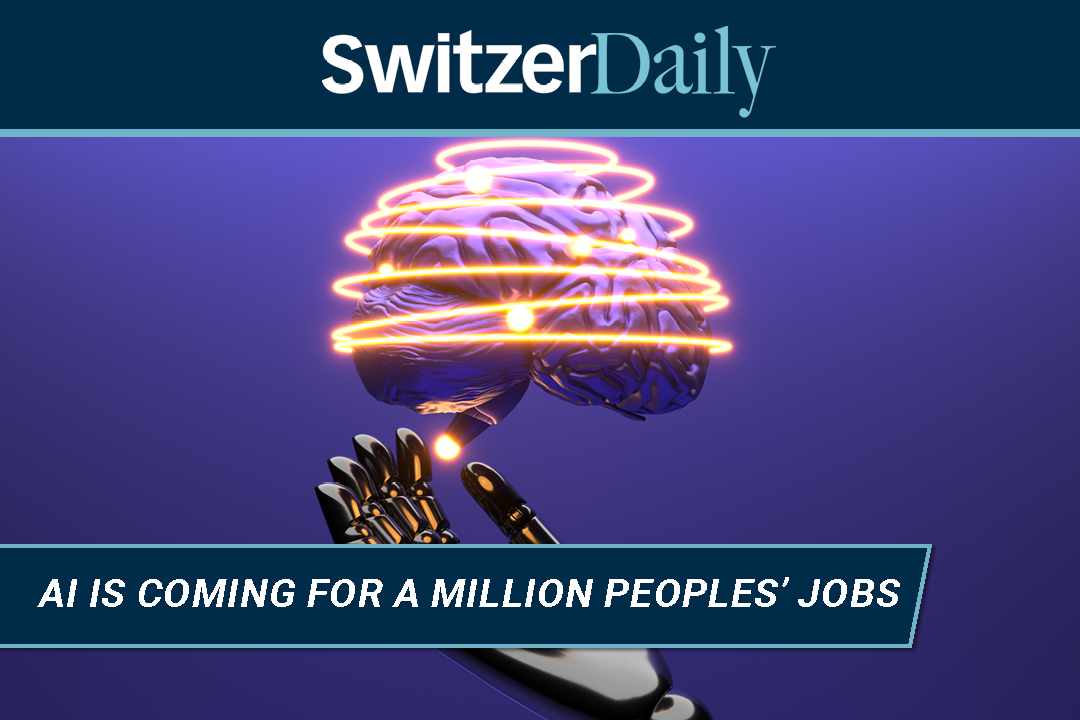

The Daily Telegraph has had a stab at what Artificial Intelligence (AI) is set to do to our jobs and the experts it has recruited predict 1.3 million workers could lose their job by 2027. Of course, this is the ‘best guess’ by groups trained to read the tea leaves, but they could be wrong — the job losses could be greater! Either way we are in for a shock.
What I’m talking about is what US futurist Alvin Toffler warned us in his 1970 best-seller Future Shock. In a nutshell, he predicted that the rapid change in technology would profoundly change the way people would interact with each other. This rapid change is a disruptive force in society, leading to what Toffler called “high transience” e.g., relationships lasting shorter periods of time or ideas being “used up” more quickly.
Anyone who’s gone to a restaurant and seen a group of young people all sitting at a table, not talking and flicking through their phones, can see Alvin was on the money some 53 years ago! That’s predicting with a capital P.
The Telegraph tapped into the work of ServiceNow, which relied on the research work of Faethm by Pearson, which is a ‘future of work’ company. This is what the company says about itself: “In 2021, Faethm joined Pearson, creating the world’s first truly end-to-end future of work company and accelerating our mission to prepare every worker, everywhere, for the future of work. Our market-leading data, insights and AI capabilities will power the next generation of Pearson’s lifelong learning products to meet the rapidly changing needs of today’s workforce and bridge the global skills gap”.
In summary, this is a company that uses AI to work out what will happen to people’s jobs. They think many bank workers are on death row. The research found that 46% of the tasks that bank workers do will be automated and that will reduce the need for them.
That’s horrible for workers but great for bank profits and bank share prices!
The Tele gives us a list of others in the frame for losing their jobs to AI and here they are: financial and insurance clerks, bookkeepers, checkout operators, data entry people, telemarketers and legal secretaries.
But it’s not all bad news because as some 6,000 types of jobs disappear, there’ll be new demand for people to take on the jobs that an AI-world requires.
The research suggests that the retraining will mean say a sales assistant in a department store earning $50,000-$60,000 has a 91% fit for being a childcare worker who can earn up to $65,000.
Meanwhile, store persons on $65,000 could retrain as a schoolteacher and command $90,000.
Of course, all this means that there’s bound to be a dislocation period, where unemployment will rise before retraining prepares workers for alternative occupations.
For those feeling vulnerable about the future of their work, here’s a great piece of advice from Eric Swift, MD of ServiceNow: “Australia needs approximately 370,000 more people in tech to deploy AI and other technologies”.
My tips to avoid being put on the jobs scrapheap is the following:
The work-from-homers have to be realistic about their decision about where they work. If they’re irreplaceable and are productive at home (and the employer agrees with this assessment), then go for it. However, if you know you’re putting your life preferences ahead of what your employer really wants, then one day AI could take your job. Then unless you’re prepared to retrain, perhaps you’ll spend more time at home than you really want.